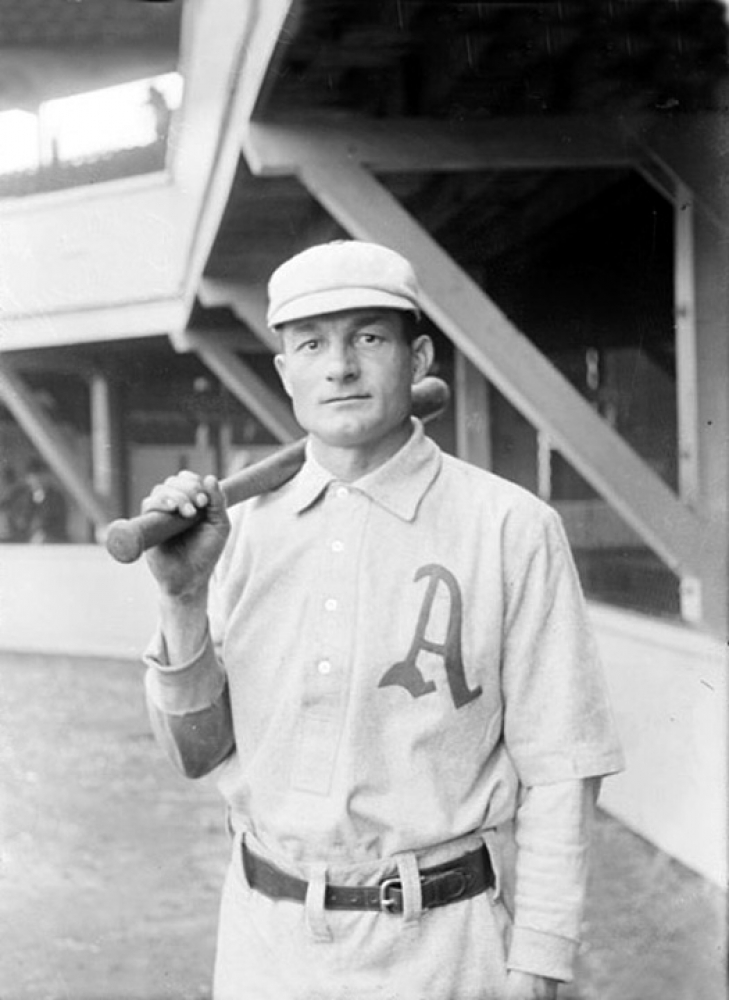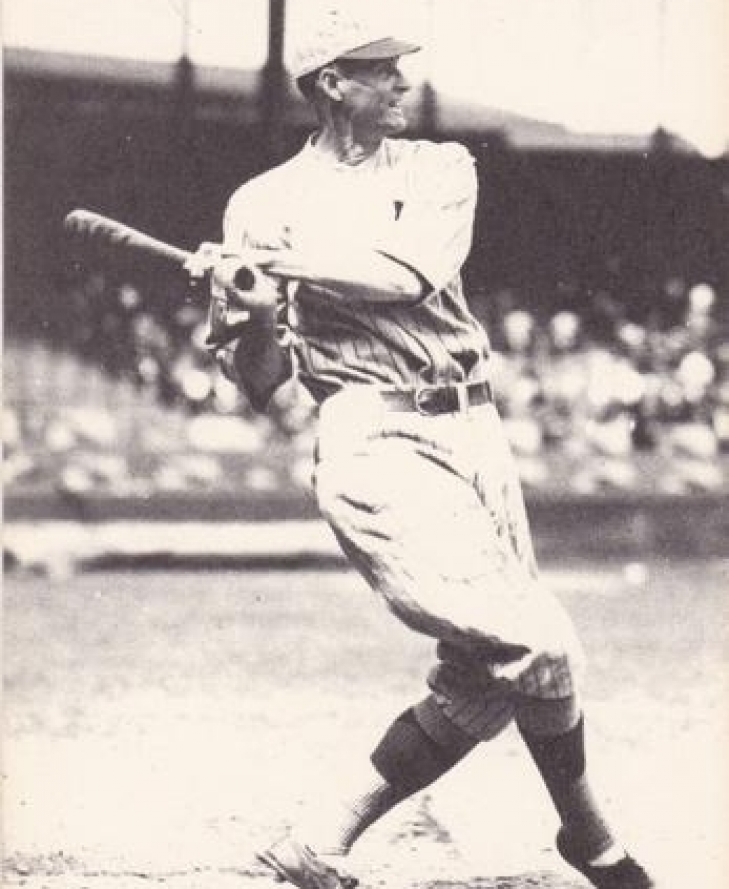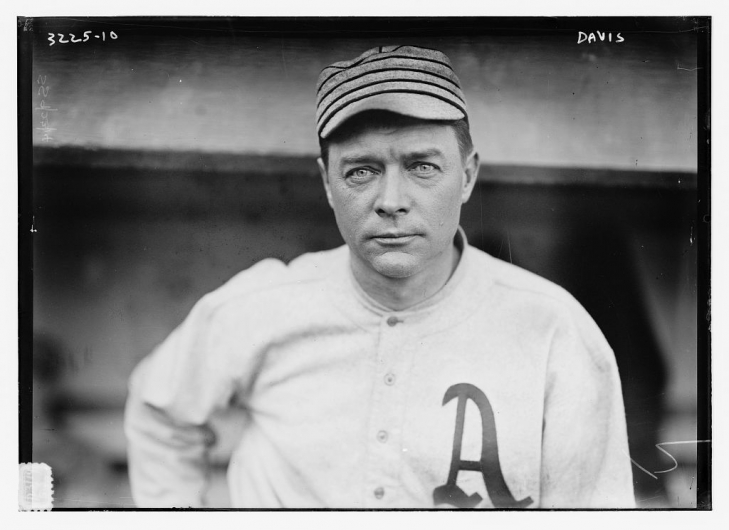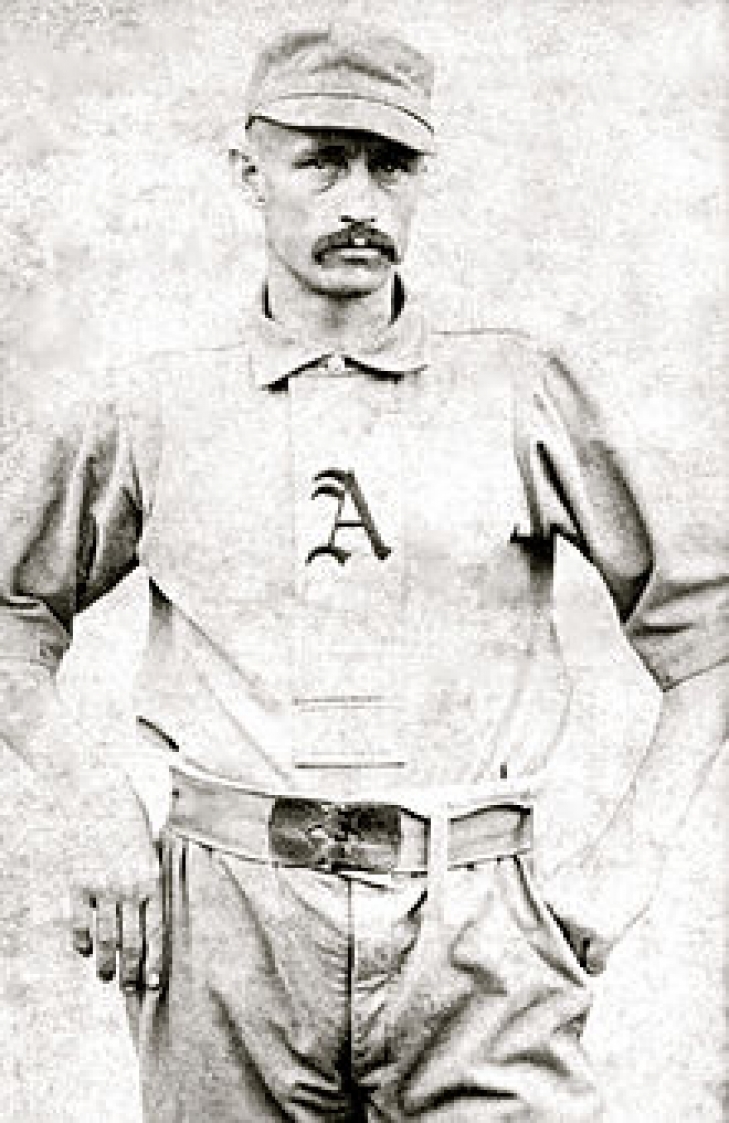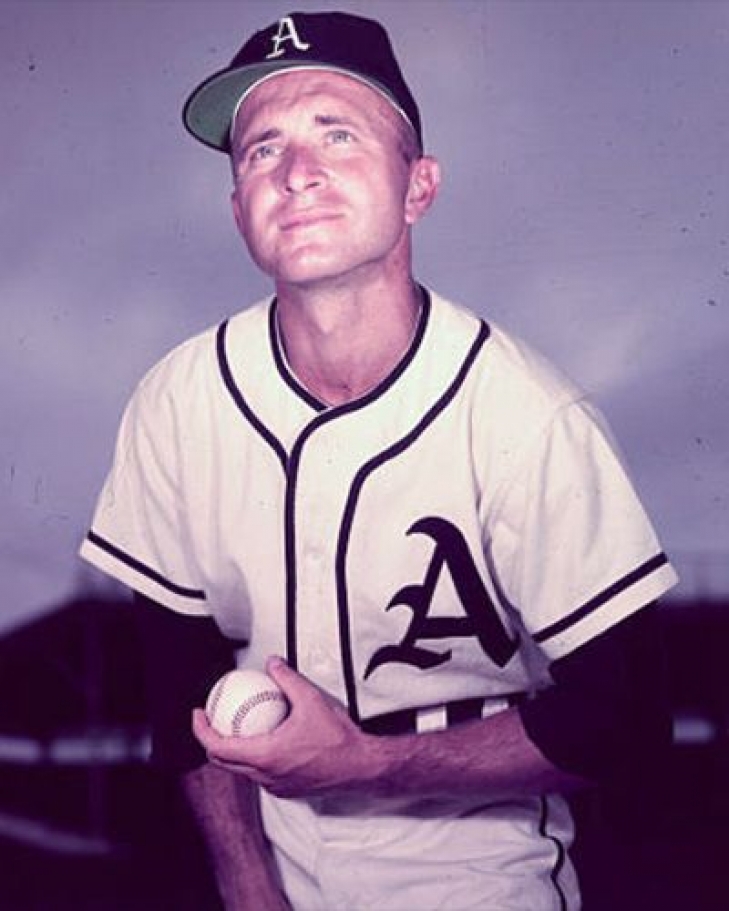218. Lave Cross
Lave Cross was a very good baseball player for his day, but because he bounced around so much, his 2,651 career Hits, which was fifth all-time at the time of his retirement, is largely forgotten.
Cross played for nine different teams in four different leagues (American Association, Players League, National League & American League), with Philadelphia being represented in all four! Also playing for St. Louis, Washington, Louisville, Cleveland, and Brooklyn, and had thirteen 130 Hit years, batting .292 overall.
Defensively, Cross usually played at Third Base, though he was exceptionally versatile, and he easily played at Catcher and the Outfield. He finished in the top ten in Defensive bWAR six times. Notably, he had 1,378 Runs Batted In over his career, an incredible number for any era, especially for someone who only had 47 career Home Runs.
192. Wally Schang
Many baseball historians have painted Wally Schang as one of the better offensive Catchers of the deadball era. In terms of his World Series Rings, you can argue that he is one of the most successful.
209. Bobby Shantz
When you look at the past MVPs in baseball history, Bobby Shantz is one of the more curious players to win it.
211. Cy Williams
Cy Williams entered Notre Dame, having only played in a handful of baseball games. He left them as an accomplished player who the Chicago Cubs signed after he finished school.
170. Harry Davis
From 1895 to 1899, Harry Davis was either a budding journeyman or a future star. He played for four different teams in the National League and had a 28 Triple year in 1897 while batting .305. Davis was in the minors for all of 1900, and Connie Mack, the owner/manager of the Philadelphia Athletics, saw him as a building block for his brand new American League franchise, and he was one of their first signees.
222. Eddie Rommell
Eddie Rommel played his entire 13-year playing career with the Philadelphia Athletics (1920-32), where he became one of the first masters of the knuckleball.
98. Bob Johnson
The Philadelphia Athletics had a powerhouse team in the early 1930s, but the Great Depression would see the owner, Connie Mack, unload his best players to keep the team afloat. As such, there was not a lot of talent left for the Athletics afterward, but Bob Johnson was an exception to that rule.
85. Bobby Matthews
297 Wins.
69. Harry Stovey
If you look at the career of Harry Stovey, accumulatively, the offensive statistics seem very good but not Hall of Fame good. 1,775 Hits, 122 Home Runs, and a .288 Batting Average don't stand out, but another look shows that is not the case at all.
45. Bing Miller
An old rookie at 26 with the Washington Senators, Connie Mack's Philadelphia Athletics would trade for him, and from 1922 to 1925, he had three .300 seasons, and in the one year he didn't hit that mark, he batted .299. He was deemed expendable and was dealt with the St. Louis Browns in 1926, but was back in 1928.
50. George Earnshaw
It took a long time for George Earnshaw to make the Majors, but once the 6’ 4” did, he wasted little time proving that he belonged.
41. Stuffy McInnis
John Phalen “Stuffy” McInnis was signed by the Philadelphia Athletics before the 1909 season, and he would play off the bench, usually at Shortstop for his first two seasons. McInnis would take over at First Base in 1911, and became the youngest member of Connie Mack’s “$100,000 Infield”.
37. Eddie Joost
In 1946, most of the majors had given up on Eddie Joost, who had issues with Braves Management and was assigned to AAA when he joined the St. Louis Cardinals organization. Joost was 31, and it could easily be believed that his best seasons were behind him. As it would turn out, that was not the case at all.
47. Bobby Shantz
Bobby Shantz was overlooked by a lot of scouts as they considered him too small (5’ 6”) but the Philadelphia Athletics would sign him in 1948, and after a couple of mediocre years, he would have a two-year run as one of the best starting pitchers in the game.
36. Elmer Valo
Born in Slovakia, Elmer Valo immigrated to the United States as a child and would live the American Dream to become a Major League Baseball Player. Valo would debut with the Philadelphia Athletics in 1940, and as history would tell us was one of the most intense players to don the uniform of the Athletics.
35. Jimmy Dykes
Arriving in the Philadelphia Athletics organization via the Rule 5 Draft for the 1918 season, Jimmy Dykes was an excellent fielder, who was believed to have limited hitting ability. That was the case in his first two seasons, where he batted below .200 but this would change as he matured into the role of an everyday starter in Major League Baseball.
22. Danny Murphy
There were a lot of great players that the Philadelphia Athletics in the 1900s and early 1910s, and this is likely why Danny Murphy has not received some of the due that he should have.
31. Topsy Hartsel
After a breakout season with the Chicago Orphans in 1901 where he batted .335 with 187 Hits, Tully “Topsy” Hartsel, bolted from the National League to the American League and Connie Mack’s Philadelphia Athletics.
48. Ferris Fain
Ferris Fain was plucked in the Rule 5 Draft after the 1946 Season, and he was inserted as the starting First Baseman the year after. Fain immediately showed extraordinary plate discipline as he had a ,414 OBP as a rookie. Fain played his first six seasons in the Majors with the Philadelphia Athletics, and he never had an OBP less than .412, and he was always in the top seven in that category. Fain would be named an All-Star in 1950, and would be again in 1951 and 1952, with the latter year seeing him win the OBP Title with .438.
38. Socks Seybold
When you think of home run champions, Ralph Orlando “Socks” Seybold doesn’t come to mind, but there are a lot of anomalies in this man’s career.


